Sapa is a must-see destination for anybody planning a trip to Vietnam's North. This area is well-known for its beautiful, untouched mountains, pleasant weather, notable features, and fascinating local culture. Mentioning Sapa, the Sapa rice field is an indispensable part that makes up the poetic landscapes and cultural story of Vietnam. Want to learn more about these incredible rice fields? Everything about it is revealed in the article below.
1. Where is Sapa?
The town of Sapa is located in the northwest of Vietnam at an elevation of 1,600 meters above sea level. It is approximately 376 kilometers from Hanoi and 38 kilometers from Lao Cai.
Cultural historians have deduced that the H'Mong people, whose language Sapa derives from, were the original inhabitants of this region. Sa Pa means "sand beach" in the native language. In the past, this area was home to a sizable sandy beach where visitors of all backgrounds would come to shop.
Prior to the end of French colonial rule in 1954, Sapa was known on maps simply as "Chapa." In Vietnam's official paperwork, the term "Sapa" has been standard since 1945. Both "Sa Pa" and "Sapa" are common spellings for this place.

2. Why should you visit the Sapa rice field at least once?
The steep slopes of Sapa's mountains present a unique challenge for farming. Yet, the local ethnic minority people have ingeniously cultivated rice on these slopes for generations, creating a landscape of terraced rice fields that stretch from the foothills to the mountaintops. The fertile soil, composed of weathered granite and the availability of water, often stored in mountain crevices, and the impressive terracing skills of the local communities carved these fields into the mountainside.
When viewed from a distance, the Sapa terraced rice fields evoke a picture of nature so breathtaking that visitors are compelled to stop and take it all in. This natural picture changes colors with the seasons. It is at its most beautiful when the new crop has begun, the rice field is rich with green rice, and the rice is ready to be harvested.
The terrace rice fields are one of the most interesting things to do while traveling to Sapa. Their stunning natural beauty and the vibrant activity along the mountain slopes create a truly picturesque scene. Travel and Leisure Magazine named Sapa's rice fields among the 7 most beautiful terraced fields in Asia, as voted by its readers. These iconic landscapes are also being submitted for recognition as a UNESCO World Heritage Site in Vietnam.
Mesmerizing Rice Terraces and Tranquil Ethnic Village Life
3. Best time to visit Sapa Rice Fields
Visiting the Sapa rice fields requires careful planning. Sapa has only one rice harvest per year due to the limited water availability on the steep mountain terraces where indigenous people cultivate the crop. There are months when the fields are bare and a few other months when temperatures can plunge below 15°C.
3.1. Planting season in Sapa
Sapa farmers typically plant crops and irrigate the rice terraces throughout May and June. This period, known as the "pouring season," transforms the fields into a vast, shimmering mirror of water. This is an ideal time for tourists and photographers alike, as the breathtaking beauty of the landscape will have you instinctively reaching for your camera to capture its splendor.
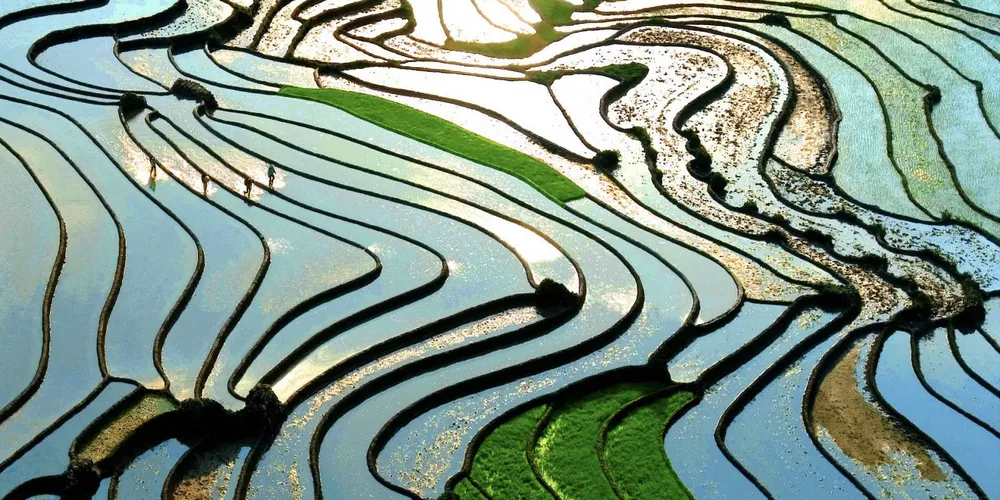
In July, Sapa is at its lush greenest, also wettest with increasing rainfall. Showers can be heavy, lasting for 20 minutes to an hour, but typically leave a fresh and pleasant feeling afterward.
Then the rice flowers bloom throughout August. The sweet scent of young rice seeds wafts through the air.

3.2. Sapa harvest season
Sapa rice fields are most beautiful during the first two weeks of September when the fields become a golden color and the rice is ready for harvest. Many postcards feature these stunning rice terraces during harvest time, often considered the best time to witness their beauty. You may even observe Hmong and Red Dao families harvesting rice on the hillsides.
It's common for Hmong and Red Dao members of the same family to work together on their farms. The farmers chat, sing songs, and tell jokes while they work to amuse. Unlike farmers in the Red River Delta who bring home the produce immediately after harvesting the rice, the Hmong and Red Dao have additional tasks to complete in the fields. After cutting and drying the rice, they separate the grains from the stalks. Only when the rice grains are completely dry do they take them home. This process requires the Hmong and Red Dao to spend more time working in the fields.
Especially when the new rice season begins, the Hmong people celebrate "Le hoi Tet Com Moi" - a new rice ritual. To appease the spirits and ensure a bountiful harvest the following year, they select the freshest, most nutritious rice and sacrifice a chicken or pig. They save the first harvest of this high-quality rice to use as seed. This is also an excellent time to explore Sapa's rice fields and delve deeper into the local culture.
4. Where to see Sapa Rice Field?
4.1. Y Ty
To witness Sapa's most stunning rice paddies, you'll need to venture off the beaten path. Y Ty is a commune nestled near the Chinese border in the highlands of Lao Cai province, approximately 60 kilometers from Sapa town centre (a 3.5-hour drive). At an altitude of nearly 2,000 meters, it's often shrouded in mist and clouds, adding to its mystique. This relative isolation makes it a haven for photographers drawn to the commune's dramatic, steep rice terraces dotted with remote ethnic minority villages.

4.2. Y Linh Ho
About 7km southwest of Sa Pa town lies the picturesque village of Y Linh Ho. Framed by the majestic Hoang Lien Son mountains, the village is renowned for its wild and poetic beauty. Terraced rice fields cascade down the slopes, interspersed with streams and the simple, rustic bamboo homes of the local people.
Y Linh Ho's beauty is deeply intertwined with the vibrant colors of its meticulously tended rice paddies and vast cornfields, which are the main source of livelihood for the villagers. These lush fields, especially captivating during the harvest season, draw visitors from near and far with their vibrant hues.
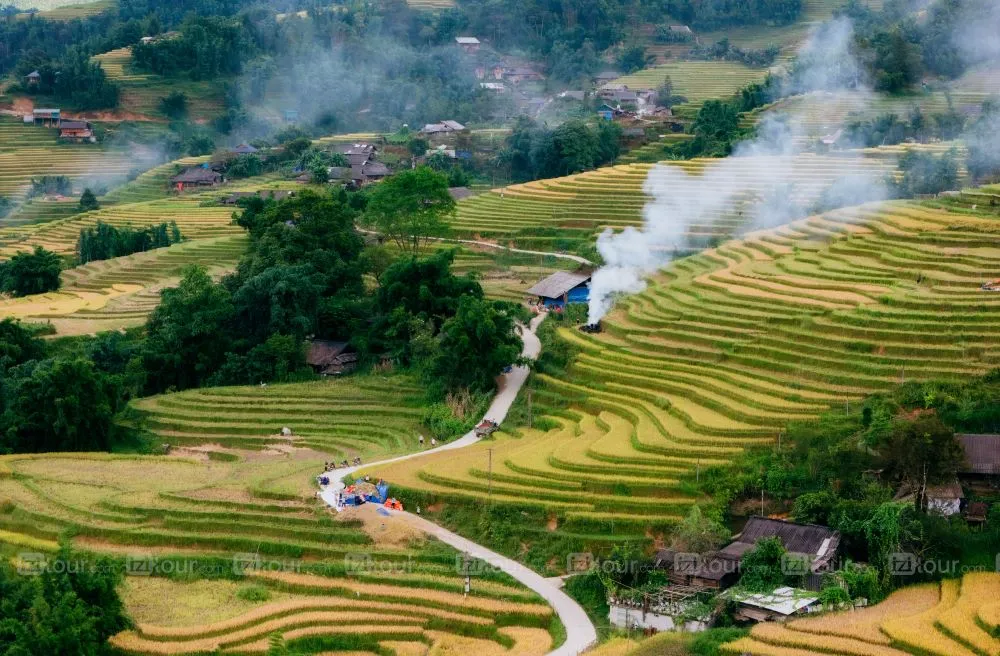
4.3. Ta Van
As one of the most popular villages near Sapa, Ta Van is a great option for a beautiful view of Sapa rice fields. This location is favoured by many visitors because it is surrounded by beautiful Sapa rice paddies on all sides. Instead travelling back to city centre, you can stay a night with the locals. Waking up in a homestay and witnessing the sunrise over the rice paddies is an unforgettable experience unlike any other!
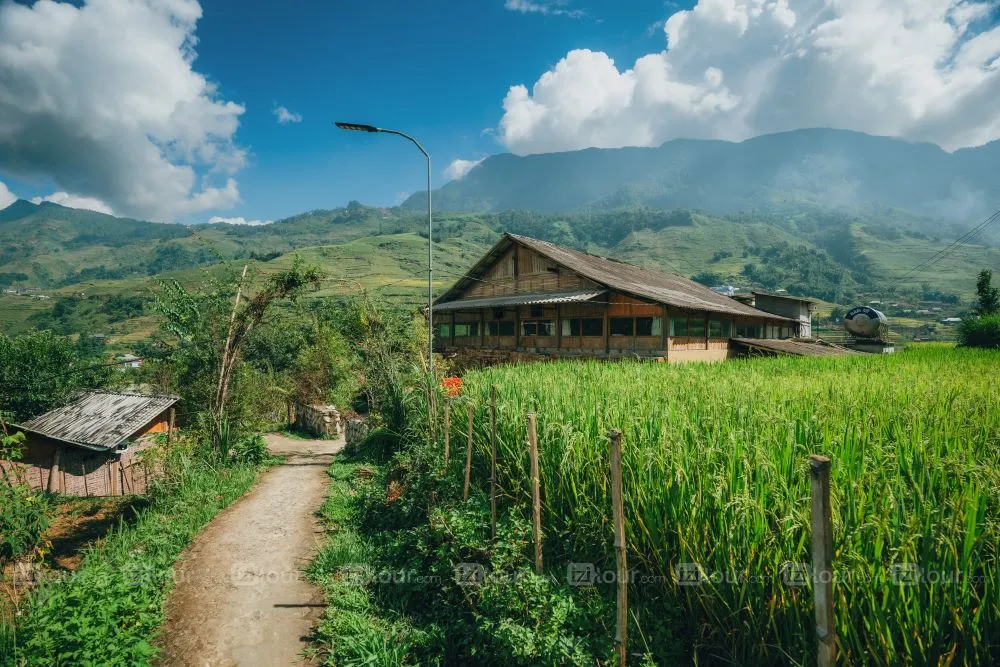
4.4. Ta Phin
Nestled in the Muong Hoa Valley, Ta Phin village is another gem surrounded by picturesque rice terraces, about 15 kilometers from Sapa's center. Its world-famous rice fields, proximity to the downtown, and the abundance of comfortable accommodations make it a popular destination for hikers looking to explore the area.
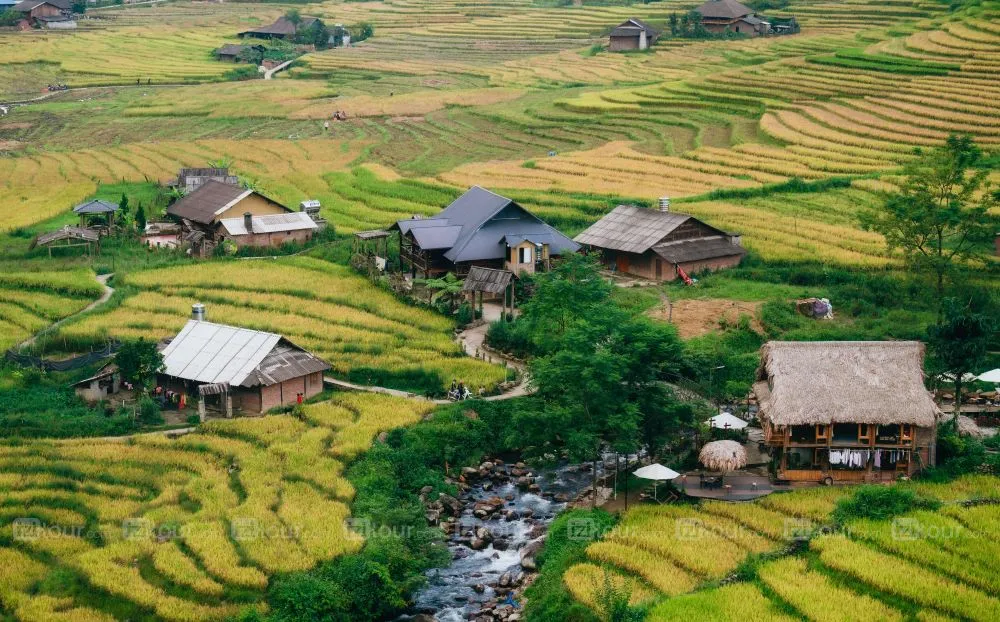
4.5. Ban Ho
Ban Ho is only 32 kilometers from Sapa, although it is a less popular destination due to its remoteness in the Muong Hoa Valley. Some three-day treks end here, while others spend the second night of their journey here. Good hiking trails connect Ta Van and Ban Ho, but you'll need a tour guide as they are not marked on any digital maps. There are certainly beautiful rice paddies along the way.
4.6. Thanh Kim
The best view of the rice terraces in Sapa is near Topas Ecolodge. If you stay there, great! Take in the breathtaking view of the rice terraces below from the comfort of the infinity pool perched on top of the mountain. Otherwise, you can find a local homestay in Thanh Kim and take a hiking tour to admire the beauty of the terrace rice fields.
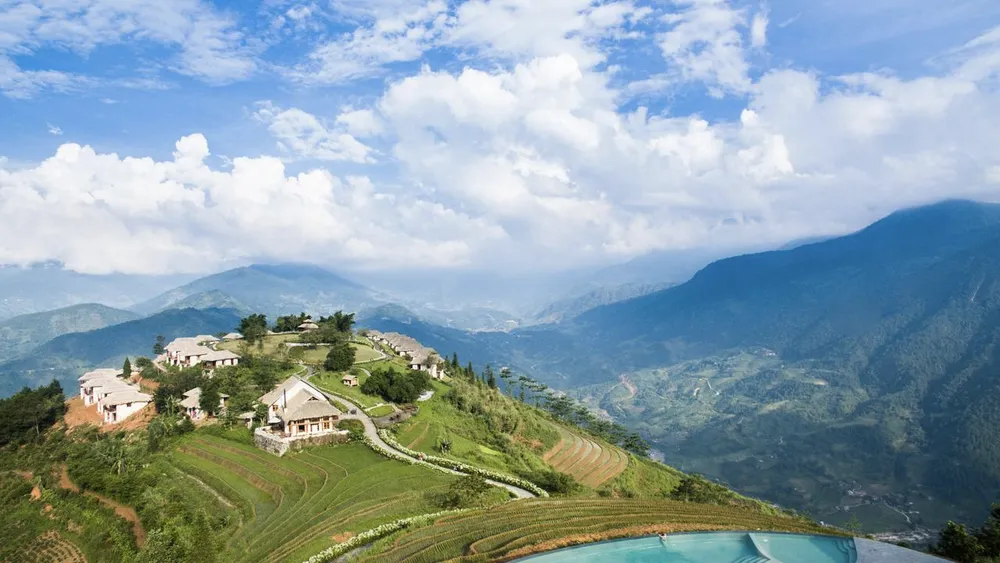
5. How to explore the Sapa Rice Field?
The best way to see this manicured gem is to hike through the rice paddies. You'll be able to visit Sapa's many ethnic minority villages on the way. This way allows you to admire the beauty of Sapa's rice terraces while learning about the region's indigenous hill tribes. There are a variety of trekking experiences to suit every adventurer, from short one-hour treks to full-day immersive journeys.
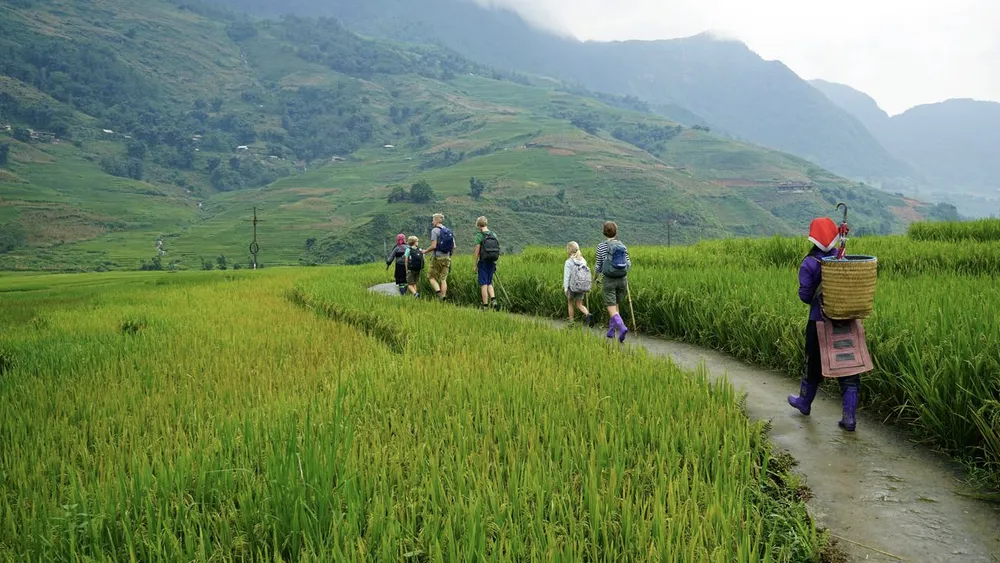
You can drive along beautiful roads if you'd rather not hike or aren't physically fit to hike. Riding a motorcycle is another option; there are several routes you may go. If you're a motorcycling enthusiast, the Sapa Loop is a must-drive. The entire circle may be driven in two to three days, but be aware that driving in the Vietnamese mountains can be dangerous and is recommended only for those with extensive driving expertise. Mountain biking is a safer option to see Sapa rice terraces. It is recommended to go on one of the guided excursions available.
If you don't want to walk or are physically unable to, you can explore the beautiful roads by car and stop anywhere you want. Another option is to ride a motorbike; there are several routes you can take on a motorbike. If you're a cycling fan, the Sapa loop is a must-do. The entire loop can be done in two or three days, but be aware that driving in the Vietnamese mountains can be dangerous and is only recommended for those with extensive riding experience. Mountain biking is a safer option for seeing Sapa's rice terraces.
I recommend that you join one of the Sapa guided tours. Guides are familiar with the terrain and can ensure your safety, especially on new trails. The tour operators handle logistics like transportation, route planning, and sometimes even meals and accommodations, making your trip hassle-free.
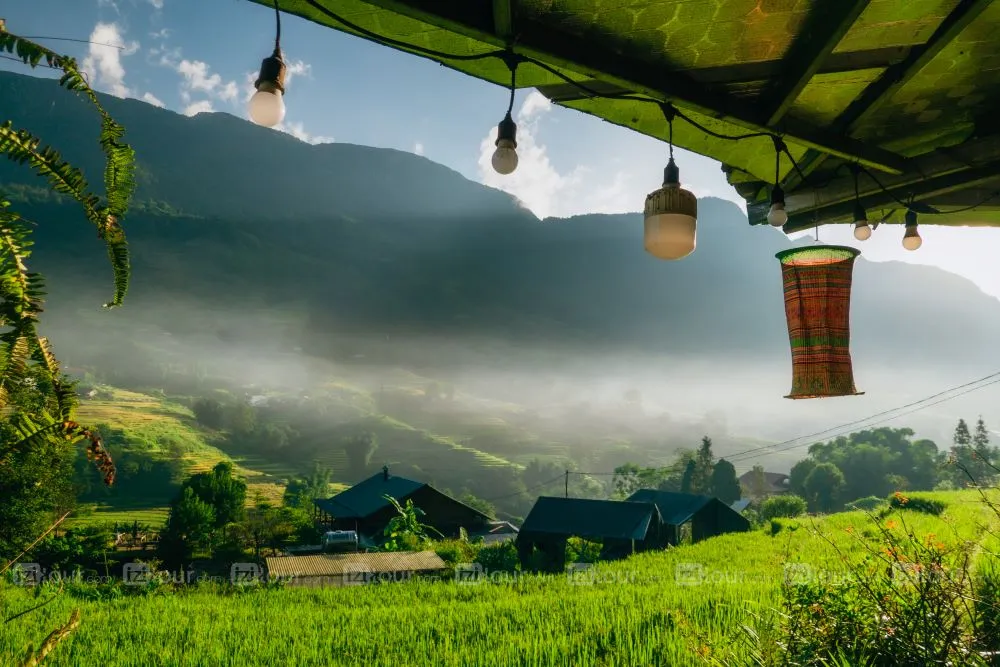
Regarding accommodation, consider staying in a homestay owned and run by local minority groups for an authentic Sapa experience. While comfort may be basic, the cultural immersion is invaluable. Staying here is all about the experience, so don't count on much in the way of comfort. You can expect simple rooms equipped with essentials like a Western-style toilet and a mosquito net. You may learn to interact with the locals and join them for supper if you go hiking with a guide who know your language. Some homestays also offer relaxing herbal baths, a perfect way to unwind after a day of trekking. Waking up to the sounds of village life and the sight of the sunrise over the Sapa rice fields is truly special.
See more:
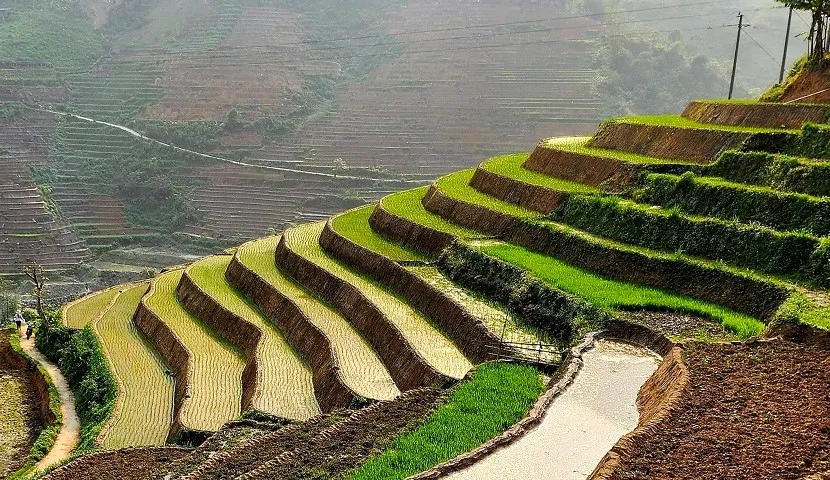
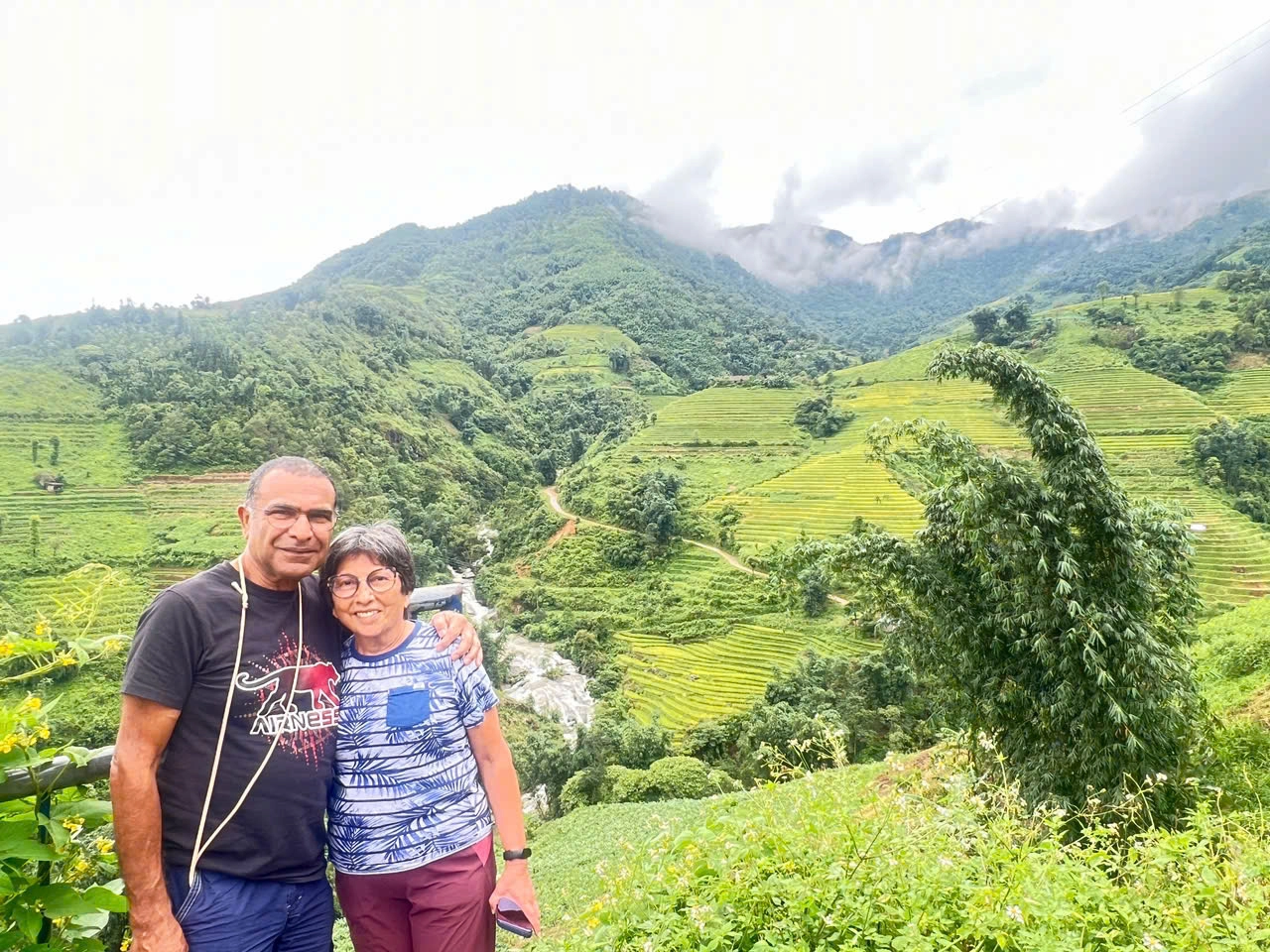
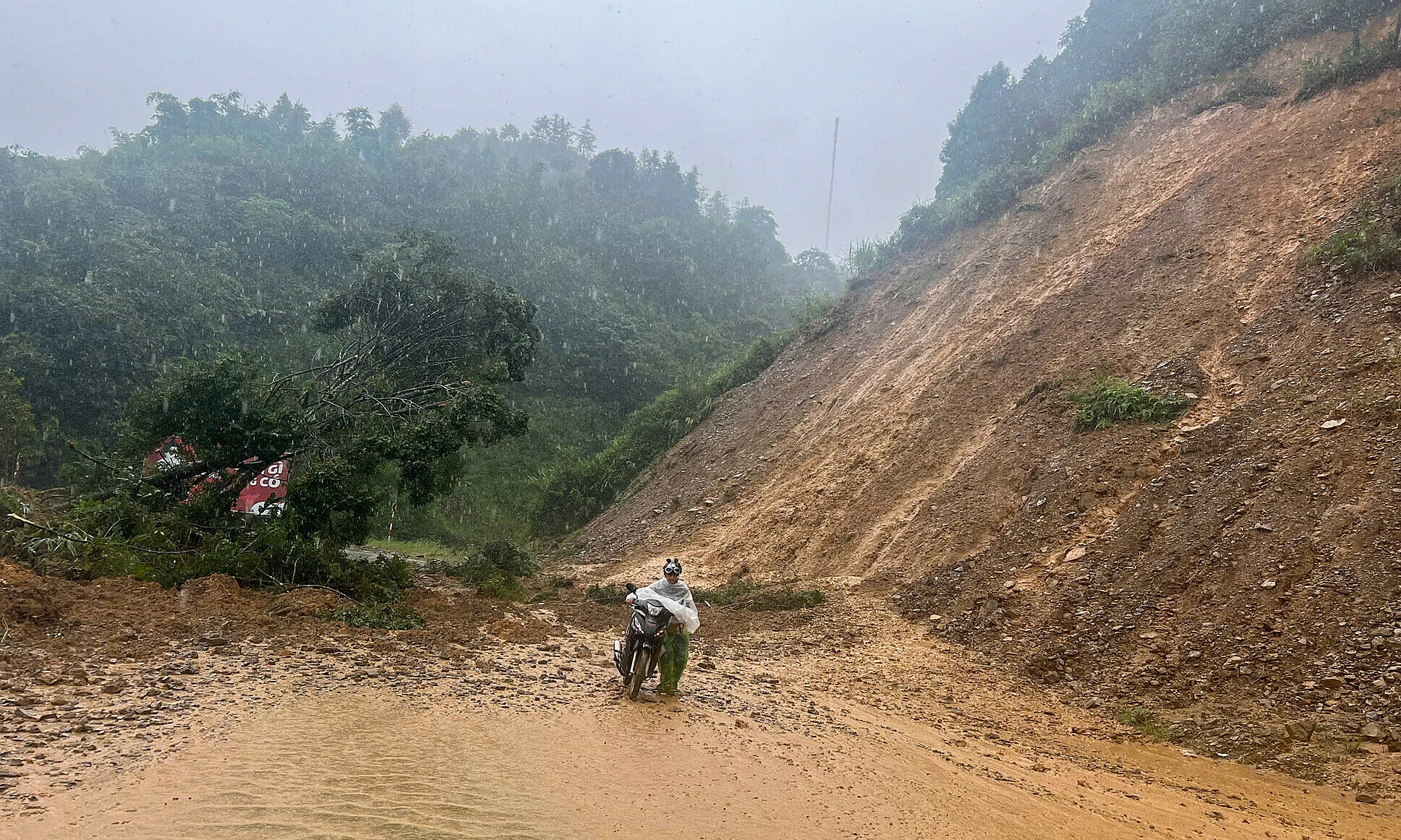
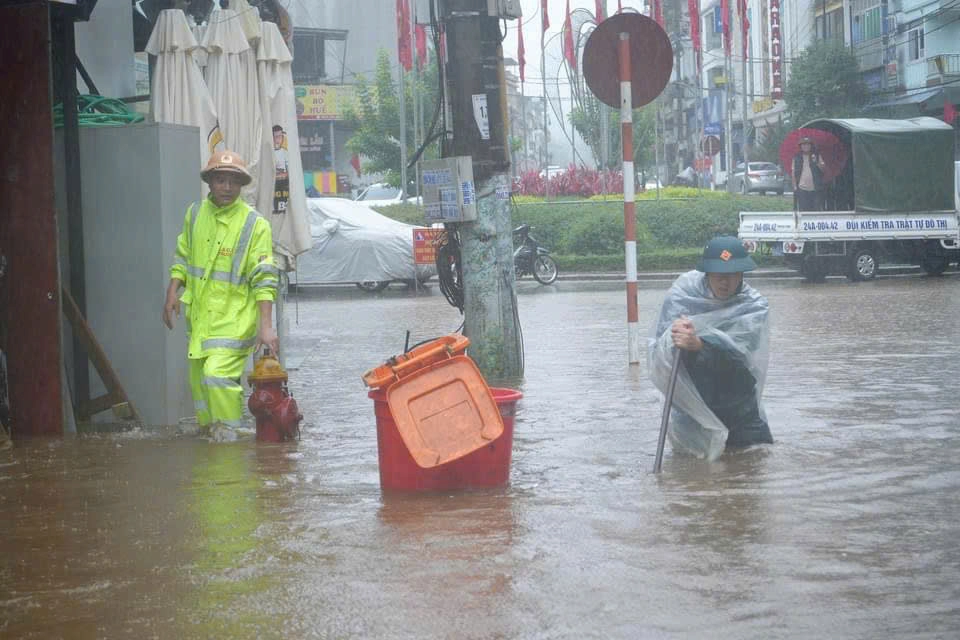






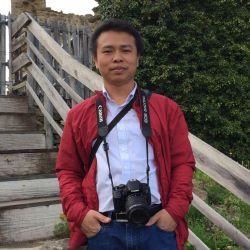

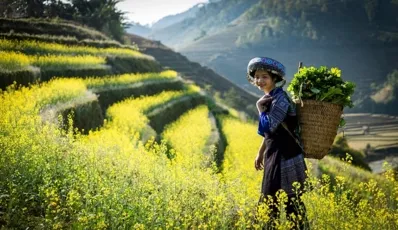

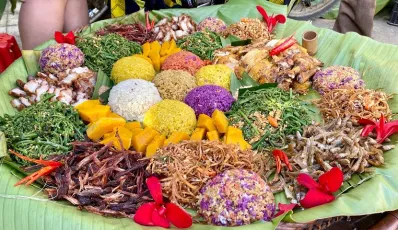
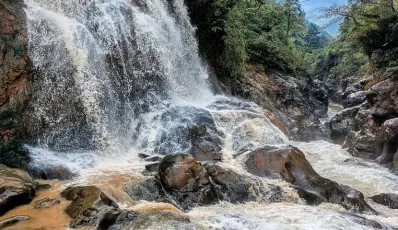

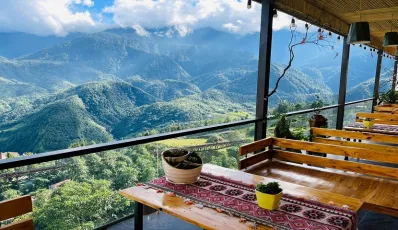
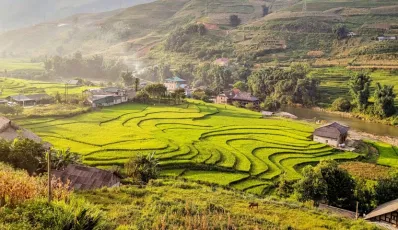
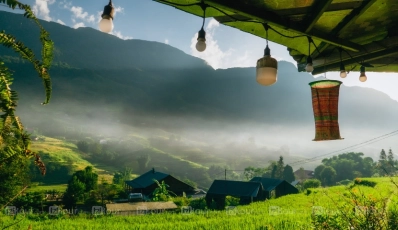
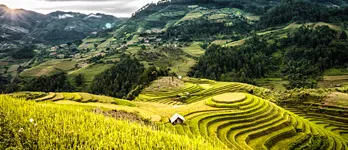
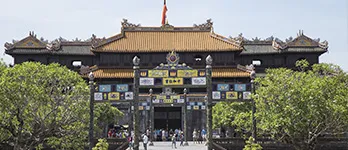
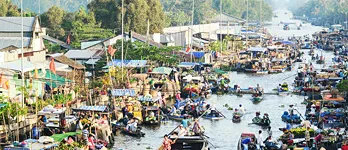

 TRAVELERS' CHOICE 2025
TRAVELERS' CHOICE 2025 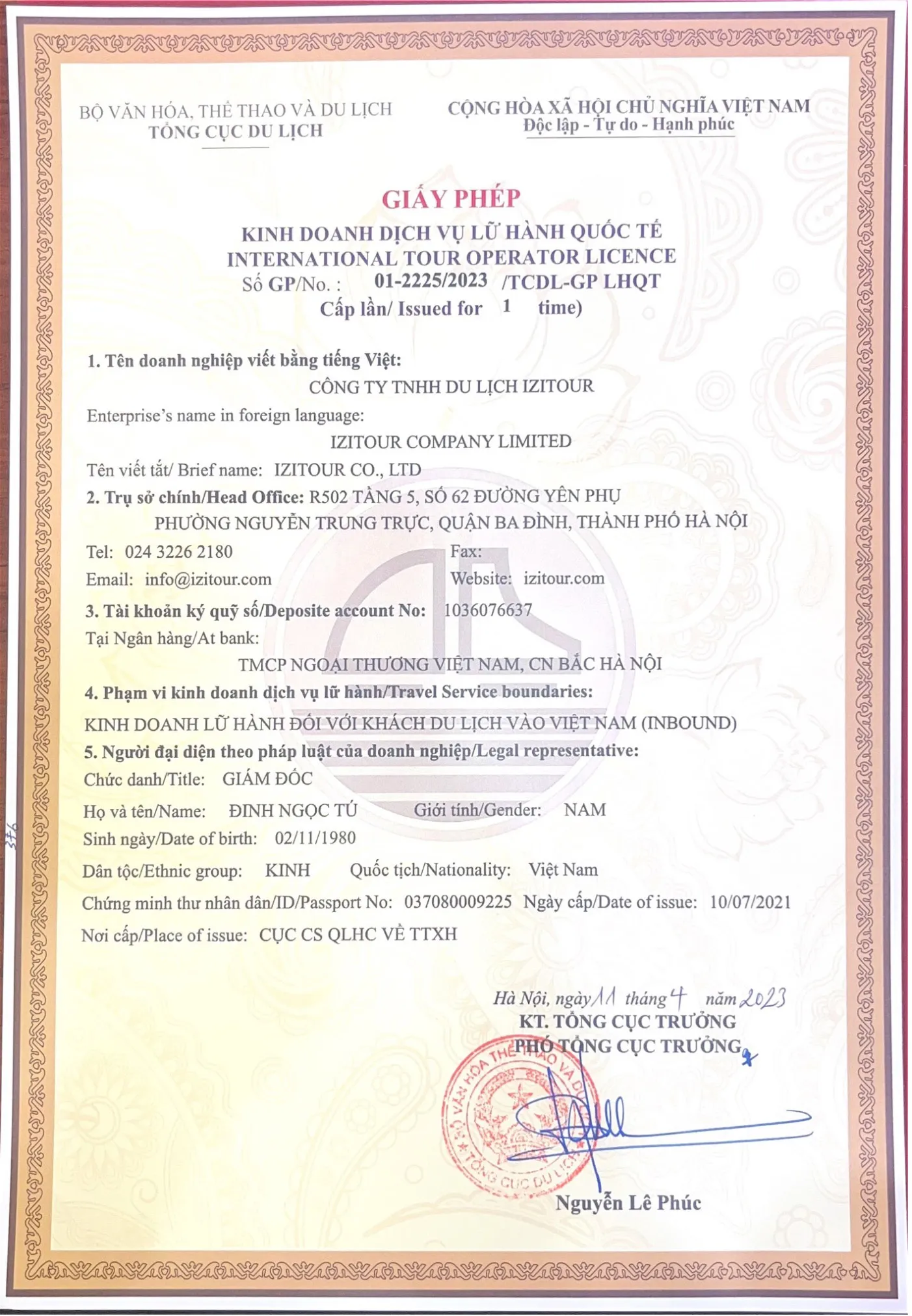



07 Comments
France
Vietnam
Italy
Vietnam
Italy
Martinique
How amazing! What is the price for tour visiting rice terraces?
Vietnam
Hi Tami, thank you for your question. You can see some of our best offers here: https://izitour.com/vietnam-tour/sapa. Please enter your number of people and travel date to get the real time price. Best regards,
Write Reply